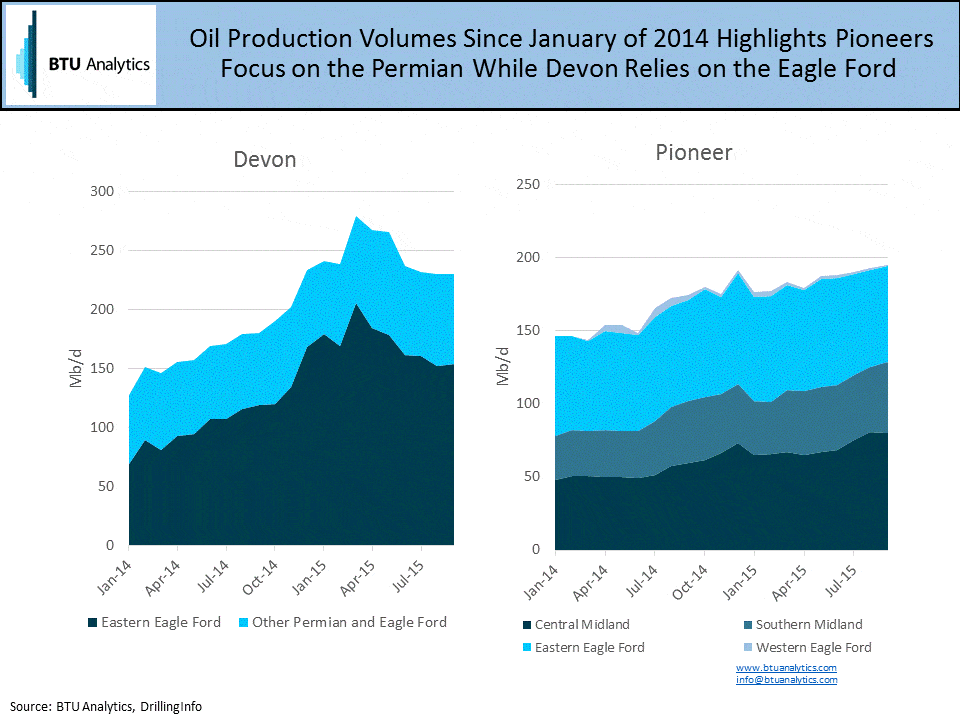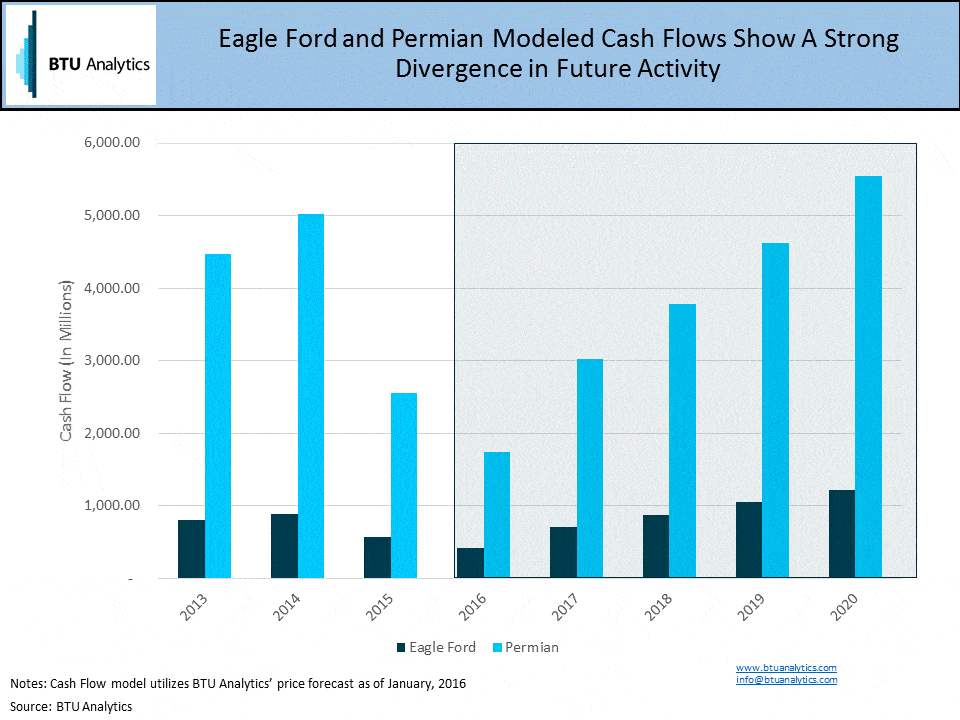With the start of the year comes capital budgeting. Prompt month WTI is currently sitting at $31 and natural gas prices have been hovering in the low $2’s for months which have been weighing on E&P cash flows and resulting in E&P capex cuts. With the industry now embarking on a year where prices are not expected to get much better, further E&P budget discipline will be required to make it through these lean times.
The theme of ’living within cash flow’ started to work its way into E&P capex statements in the back half of 2015, as the reality of ‘lower for longer’ set in. Further drastic E&P capex cuts can be expected in 2016, but this is not the case with all E&P budgets. While some producers have stated that new drilling activity will almost cease in 2016, at least one company has announced a higher budget in 2016 and plans on ramping up activity in core acreage. BTU Analytics has captured 20 capital budget announcements thus far for 2016, and on average expenditures are set to decline by roughly 39%.

Of the large cap producers BTU Analytics investigated, two approaches caught our eye. Devon Energy (NYSE:DVN) and Pioneer Natural Resources (NYSE:PXD) both operate in the Permian and Eagle Ford basins yet they are taking drastically different approaches to spending in 2016. While Devon plans on slashing capex by 50% from $4.4 billion in 2015 to $2.2 billion in 2016, Pioneer intends to increase spending by 15% from $2.2 billion in 2015 compared to $2.4 billion in 2016. The chart below shows each companies’ operated Eagle Ford and Permian production from January 2014 forward. While 70% of Devon’s 2015 production from the two plays came from the Eagle Ford, Pioneer’s production in the Central and Southern Midland represents over 65% of volumes.

Additionally, it is worth noting that Devon entered the Eagle Ford region in early 2014 after acquiring 82,000 net acres from GeoSouthern Energy. At the time, the company touted the acquisition as “offering some of the highest rate-of-return drilling opportunities in North America”. Just a year later in mid-2015, Pioneer unloaded some of its Eagle Ford midstream assets to Enterprise Product Partners for $2.2 billion and the company noted that cash generated from the sale would be used to fund activity in the Permian. Flash forward to today and the waves from these two opposing moves seem to still be reverberating. In addition, Devon has a new focus on the STACK play in Oklahoma with its December 2015, $2.5 billion acquisition of Felix Energy.
Pioneer noted that capex in 2016 will be used to continue drilling in the Spraberry/Wolfcamp plays where 18 horizontal rigs will be active. The budget calls for reducing rigs in the Eagle Ford basin from a total of six in 2015 to four in 2016, with room to decline further if commodity prices dictate the need. While Devon has signaled that activity in the Eagle Ford and Permian may be flat, they recently acquired assets in the STACK and PRB, which adds versatility to 2016 operations.
Looking at BTU Analytics’ cash flow model, which we use to understand the cash generated by individual plays that can be reinvested in future production, the decision to focus on Permian assets is in line with expected future cash flows. After almost converging early this spring, cash flows in the two plays begin to separate as Permian production grows. Consensuses estimates show Pioneer growing barrels of oil equivalent (BOE) production by low double digits in 2016 while Devon’s BOE contribution to the lower 48 mix is expected to remain flat.

These two companies paint a good picture of the wide variety of approaches E&P companies are taking in these high pressure times. While some will grow production in 2016, large capex cuts are on the horizon and oil production is expected to roll over. The only question remains is how long does the ‘lower for longer’ last and how much pain can the US E&P space can take. For more information about E&P economics and oil, NGL, and gas outlooks request a free sample of BTU Analytics’ Upstream Outlook and check out our conference to be held on February 4th in Houston, TX entitled What Lies Ahead.









